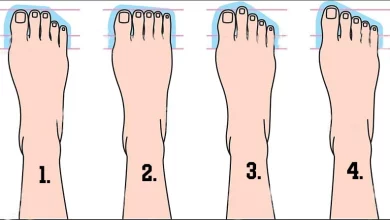How To Use Hydrogen Peroxide For Nail Fungus – A Step By Step Guide
You Will Need
- 3% hydrogen peroxide
- White vinegar/apple cider vinegar
- Distilled water
- Plastic tub
- Tissues
NOTE
While method 1 is often quoted as a solution to nail fungus on the internet, we recommend using method 2. This is because under certain conditions, mixing hydrogen peroxide and vinegar can form peracetic acid, which is a caustic chemical that does not share the desired properties to treat nail fungus.
Time
Method 1 – 10 minutes
Method 2 – 30 minutes
Method 1
- Mix equal parts of the hydrogen peroxide, distilled water, and vinegar in the plastic tub.
- Ensure that you are not using anything stronger than a 3% hydrogen peroxide solution; or it may damage your skin.
- Soak the nails that have been affected by the fungus in this solution.
- Wait for 10 minutes.
- Dry your nails with a dry tissue. Dispose of the tissue after use.
- Ensure that your nails are completely dry before you cover them.
Method 2
- Mix equal parts of the hydrogen peroxide and distilled water in the plastic tub.
- Follow the steps mentioned in method one.
- On day 2, follow the same steps using equal amounts of vinegar and distilled water.
- Keep alternating between hydrogen peroxide and vinegar until the problem subsides.
How Often?
You have to repeat this process every day until, and even after, the problem subsides. Getting rid of nail fungus is not easy and will take a lot of patience and effort.
Why This Works
Vinegar is an acidic solution that helps relieve itching and restores the pH balance of your skin and nails. These properties help the liquid create an unfavorable environment for the fungi to breed in, killing off the infection. Apple cider vinegar helps reduce inflammation, reducing the pain caused by nail fungus.
3. Baking Soda And Hydrogen Peroxide For Nail Fungus
You Will Need
- ½ cup baking soda
- 1 cup 3% hydrogen peroxide
- ¼ cup white vinegar
- 4 cups warm water
- ½ cup Epsom salt
- Plastic tub
- Tissues
Time
10 minutes
Method
- Mix the baking soda, peroxide, vinegar, Epsom salt, and water in a plastic tub until they are well combined.
- Ensure that you are not using anything stronger than a 3% hydrogen peroxide solution; or it may damage your skin.
- Soak the nails that have been affected by the fungus in this solution.
- Wait for 10 minutes.
- Dry your nails with a dry tissue. Dispose of the tissue after use.
- Ensure that your nails are completely dry before you cover them.
How Often?
You have to repeat this process every day until, and even after, the problem subsides. Getting rid of nail fungus is not easy and will take a lot of patience and effort.
Why This Works
Baking soda contains antifungal properties that help prevent the growth of fungus. This solution helps balance your skin’s pH levels while killing off fungus.
Additional Tips For Treating And Preventing Nail Fungus
- Wash and disinfect all of your shoes and socks.
- Disinfect your nail clippers with hot water and alcohol.
- Keep your fingers and toes covered when you are outside.
- Keep your nails short and clean.
- Thoroughly dry your nails after washing your hands and feet.
- Spray your gloves and shoes with anti-fungal sprays on a regular basis to kill lingering fungi.
- Always dry your shoes and socks properly. Moisture is your worst enemy as it creates a breeding ground for fungus.
Side Effects Of Using Hydrogen Peroxide For Nail Fungus Treatment
If you experience any of the following side effects, try using a solution weaker than 2%. You can also try diluting the solution further with water.
- Hydrogen peroxide can irritate your skin causing redness, stinging, and mild itching.
- It may also dry out your skin and cause cracked feet.
- Peroxide can cause your skin to peel.
If you ever notice discoloration on your skin, it might be nail fungus. The next time this happens, you know what to do. Have you ever dealt with nail fungus? What helped you treat it? Tell us in the comments section below.



